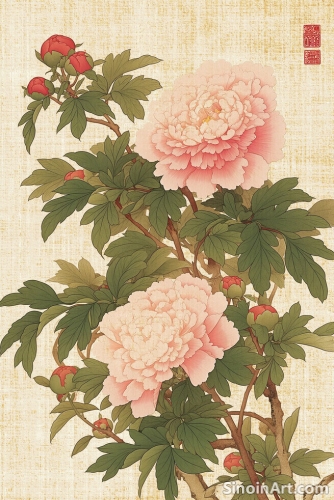Gongbi Painting and the Depiction of Historical Events
|
Gongbi painting has played a significant role in documenting and interpreting historical events throughout Chinese history. With its meticulous detail and precise rendering, Gongbi has been used to capture important scenes, figures, and moments in history, offering both visual records and cultural perspectives on the past. These works serve not only as art, but as visual records of history.  Gongbi paintings depicting historical events often showcase meticulous attention to detail, accurately portraying the clothing, architecture, and cultural context of the time. The artists often based their works on meticulous research and careful study of historical artifacts. These works capture both the important aspects of the events and the historical context.  The depiction of historical figures in Gongbi paintings aims not only to capture their likeness but also to convey their power, status, and character. The artists carefully choose clothing, accessories, and poses that reflect the historical role and significance of each figure. The careful use of symbolism further reinforces the identity of the figures.  The use of color also plays a crucial role in conveying the mood, atmosphere, and symbolic significance of the historical event being depicted. Colors are chosen to evoke specific emotions and associations, helping to tell the story and enhance the overall impact of the artwork. Color use helps to guide the interpretation of the event. Gongbi paintings depicting historical events not only document the past but also offer interpretations and perspectives that reflect the cultural values and beliefs of the time the artwork was created. The artists often selected specific details that reinforced specific cultural or political messages. These works serve not only as records, but as cultural interpretations. Gongbi paintings have served as a powerful medium for understanding Chinese history. The artwork is not simply an objective record of the past; it also adds a layer of artistic and cultural interpretation to these historical events. These works serve as a visual record and a piece of cultural expression. |
Tag : Gongbi history, historical painting, Chinese historical art, documentary painting, historical events in art
Related information
- The Role of Line in Gongbi: Structure and Expression
- Gongbi and the Depiction of Water: Capturing the Flow and Spirit
- The Influence of Gongbi on Contemporary Art
- Gongbi Painting and Its Cultural Significance in China
- Gongbi Painting and the Use of "Boneless" Technique
This article focuses on the importance of line in Gongbi painting, detailing the "gougou" outlining method, the variation in line weight, and the use of lines to convey structure and expression in the artwork.
This article explores the depiction of water in Gongbi painting, highlighting the techniques used to capture its flow and movement, the use of color to suggest its depth, symbolic significance, and how it enhances the overall sense of harmony and balance within the artwork.
An examination of Gongbi painting's influence on contemporary art, highlighting the adaptation of its techniques, symbolism, and aesthetic principles.
This article explores the cultural significance of Gongbi painting in China, highlighting its historical importance, its role in reflecting cultural values, its connection to nature, its emphasis on discipline, and its continued relevance in modern Chinese society.
This article explores the “boneless” technique (没骨法) in Gongbi painting, highlighting how artists use color washes to create forms without preliminary outlines, adding softness, fluidity, and demonstrating a versatility within the art form.